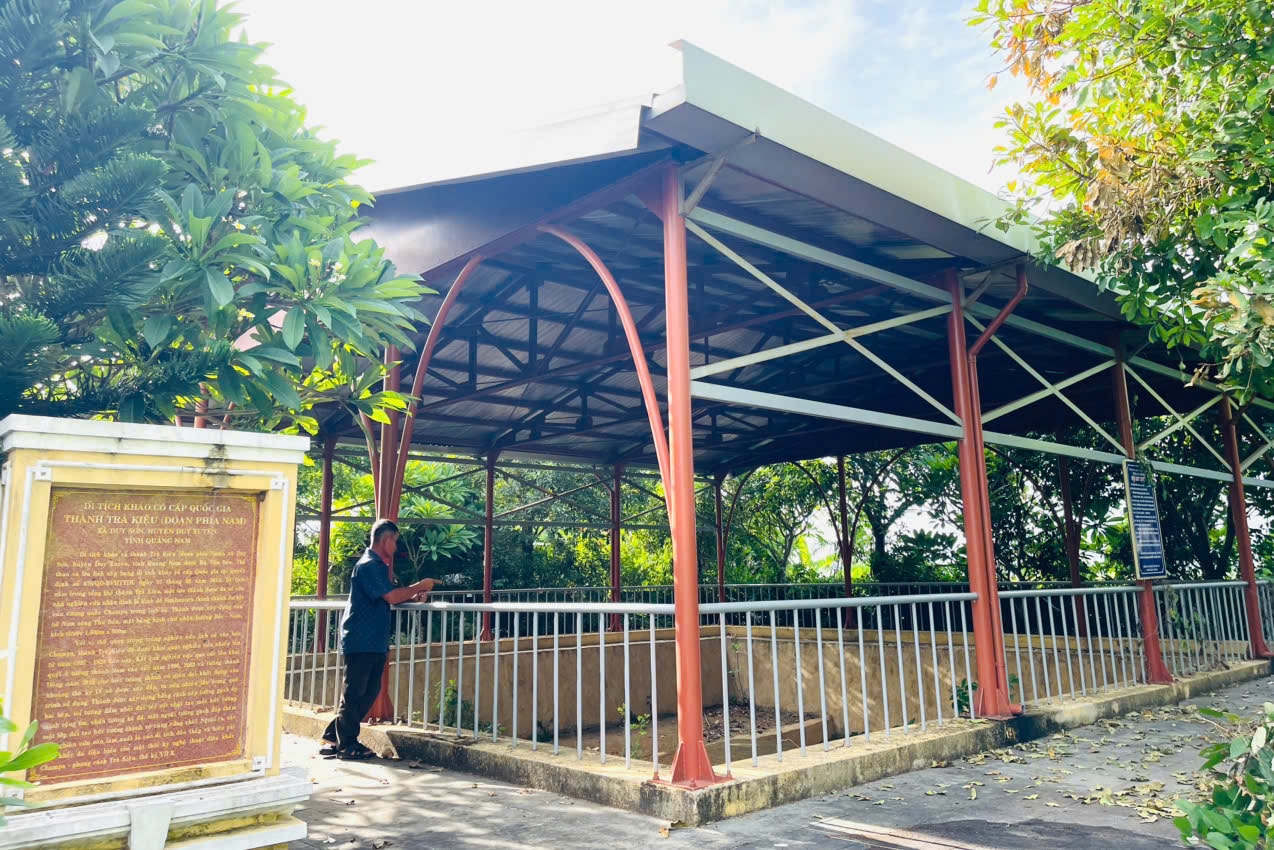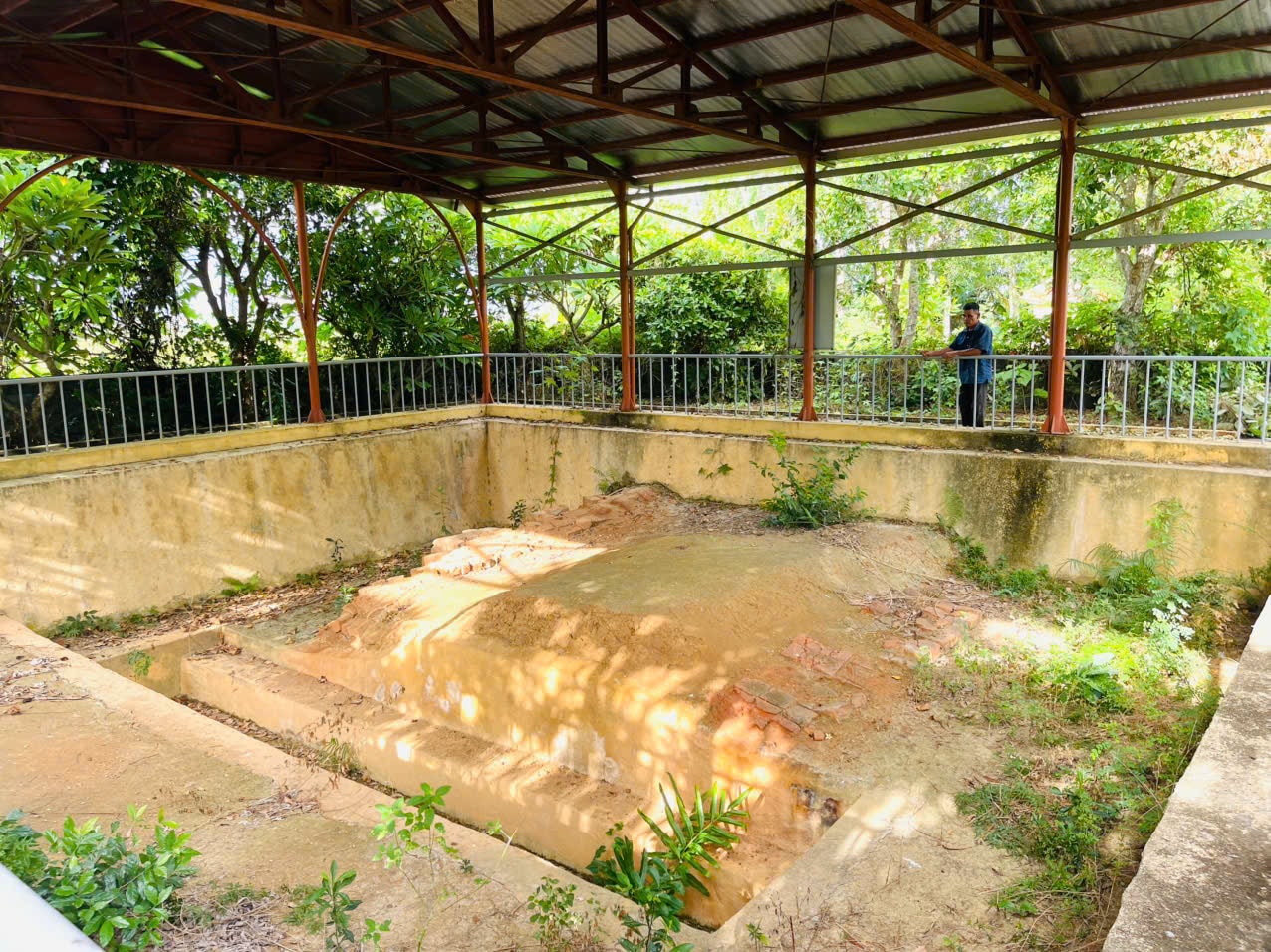
The fascination of archaeological sites
Archaeological documents (along with epigraphic materials) have revealed four interesting points about Tra Kieu. First, the Tra Kieu archaeological site is an invaluable treasure trove of history and culture, providing vivid evidence of the glorious period of the Champa kingdom.
This place is a meeting point of history, art, and archaeology, carrying within it many layers of profound meaning. In fact, to date, this site has been the subject of six surveys, each clarifying many issues and even reinforcing or providing evidence that necessitates a change in previous assessments.
Secondly, based on archaeological documents, inscriptions, and scholarly research, Tra Kieu is identified as the first capital of the Champa kingdom, existing for nearly 250 years under the name Simhapura (Lion City). Tra Kieu's strategic location on a low hill beside the Thu Bon River provided favorable conditions for the development of a major political , military, and cultural center. This is where Champa kings, notably King Prakasadharma (7th century), ruled and laid the foundation for the kingdom's prosperity.
Later, although the Champa capital moved to the southern lands, Tra Kieu still retained its important strategic role.
.jpeg)
Its location on the waterway connecting two other key centers, My Son (religious center) and the ancient port city of Hoi An ( economic center), ensures that Tra Kieu will not be forgotten.
During the 8th, 9th, and 10th centuries, this region continued to be a thriving economic and religious center, a crossroads of cultural, commercial, and religious influences. This development left behind a rich cultural legacy, a testament to the enduring vitality of this land.
Thirdly, the sculptural and architectural decorative artifacts found, especially those dating from the 10th century, have created a distinct, refined, and expressive style, which researchers call the Tra Kieu style.
This style is expressed through reliefs, statues of gods, and architectural decorative details that bear the strong imprint of Hinduism but have been strongly localized, showcasing the creativity of Cham artisans. Along with its high aesthetic value, it is a valuable source of information for understanding the beliefs, customs, and cosmology of the Cham people.
Fourth, Tra Kieu is not a single site but a complex of archaeological relics, including traces of settlements, fortifications, temples, and political centers. Artifacts found underground and on the surface date from various periods over a millennium, from the pre-Cham period to the flourishing Champa kingdom. Excavations at Tra Kieu provide a comprehensive view of the development of an ancient city.
And precisely because of the complex and multi-layered nature of the site, researching and accurately dating each structure and artifact is a major challenge.
Scientists must employ various methods, from stratigraphic analysis and artistic style comparison to deciphering inscriptions, to construct the most complete and accurate historical picture. The Tra Kieu archaeological site is a prime example of the complexity and stratigraphic disturbance required, demanding interdisciplinary knowledge, especially regarding inscriptions, and spanning nearly 100 years since the first archaeological excavation in 1927.

Tra Kieu - Where the past meets the future
The ancient citadel of Tra Kieu was recognized as a national historical site by the Ministry of Culture, Sports and Tourism in 2013. The key question now is how to make Tra Kieu a more attractive cultural and historical destination?
I believe it would be possible to build a local exhibition center or mini-museum showcasing artifacts, images, and stories about the history of the Tra Kieu citadel. Organizing tours that combine visits to other Champa historical sites such as My Son and the Da Nang Cham Sculpture Museum would create a continuous cultural tourism route.
It is necessary to encourage cultural, artistic, and educational activities associated with the relics, such as historical reenactment programs and workshops on Cham culture, so that this heritage becomes more vibrant and accessible to the public.
In the context of technological development, and given the nature and current state of the Cham relics, a groundbreaking idea is to combine the Tra Kieu archaeological site with virtual reality (VR) and augmented reality (AR) technologies.
Instead of just looking at ruins, visitors will be able to "relive" the glorious era of the Champa kingdom. In the long term, a 3D virtual museum is needed, allowing visitors to explore the entire Tra Kieu citadel vividly on their phones or computers.
Architectural structures and artifacts will be recreated in detail and authentically. In addition, during on-site visits, tourists can use their phones to scan QR codes at archaeological sites, displaying 3D models of temples and palaces that once existed there, helping them to better visualize the overall area.
It is possible to build a VR experience zone where visitors can wear VR glasses and become ancient Champa people, strolling along the streets, participating in festivals, and witnessing life firsthand. Such projects require time, investment resources, and private sector participation is possible if the authorities create the necessary legal framework and support.
And Tra Kieu will be an interesting place where the past meets the future.
Excavations at Tra Kieu
The history of research and excavation at Tra Kieu has unfolded in several stages, with the participation of both domestic and international scholars. The first stage (1927-1928) involved excavations conducted by JY Claeys, a French archaeologist from the French School of Far Eastern Studies. Many valuable artifacts were found during this excavation and subsequently displayed at the Cham Sculpture Museum. JY Claeys' work laid the foundation for later research on Tra Kieu. Following this, the second excavation began in 1985. From February 1990 to 2013, approximately five more exploratory excavations were conducted.
Source: https://baodanang.vn/cau-chuyen-tra-kieu-3301443.html



![[Photo] Two flights successfully landed and took off at Long Thanh Airport.](/_next/image?url=https%3A%2F%2Fvphoto.vietnam.vn%2Fthumb%2F1200x675%2Fvietnam%2Fresource%2FIMAGE%2F2025%2F12%2F15%2F1765808718882_ndo_br_img-8897-resize-5807-jpg.webp&w=3840&q=75)









































































































Comment (0)